Nervous System Pathways That Get Recreated Over and Over Again
Musicians, athletes and quiz basin champions all take one thing in common: grooming. Learning to play an instrument or a sport requires time and patience. It is all about steadily mastering new skills. The same is true when information technology comes to learning information — preparing for that quiz bowl, say, or studying for a big test.
Equally teachers, coaches and parents everywhere like to say: Practice makes perfect.
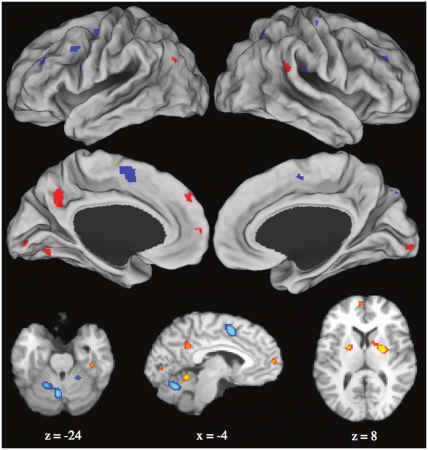
Doing something over and over over again doesn't just make it easier. It really changes the brain. That may not come as a surprise. Only exactly how that process happens has long been a mystery. Scientists accept known that the brain continues to develop through our teenage years. But these experts used to retrieve that those changes stopped one time the encephalon matured.
No more than.
Recent information have been showing that the brain continues to change over the course of our lives. Cells grow. They grade connections with new cells. Some stop talking to others. And it's not just nerve cells that shift and modify every bit nosotros learn. Other brain cells also go into the human action.
Scientists accept begun unlocking these secrets of how nosotros learn, not only in huge blocks of tissue, but even inside individual cells.
Rewiring
The brain is not 1 big blob of tissue. Only half dozen to 7 weeks into the development of a homo embryo, the encephalon starts to form into unlike parts. Later, these areas will each take on different roles. Consider the prefrontal cortex. It's the region right backside your forehead. That's where you solve problems. Other parts of the cortex (the outer layer of the brain) help process sights and sounds. Deep in the brain, the hippocampus helps shop memories. Information technology also helps yous effigy out where things are located effectually you.
Scientists can run into what function of the brain is active past using functional magnetic resonance imaging, or fMRI. At the heart of every fMRI device is a strong magnet. It allows the device to find changes in blood flow. Now, when a scientist asks a volunteer to perform a particular job — such every bit playing a game or learning something new — the car reveals where claret flow within the brain is highest. That heave in blood flow highlights which cells are decorated working.
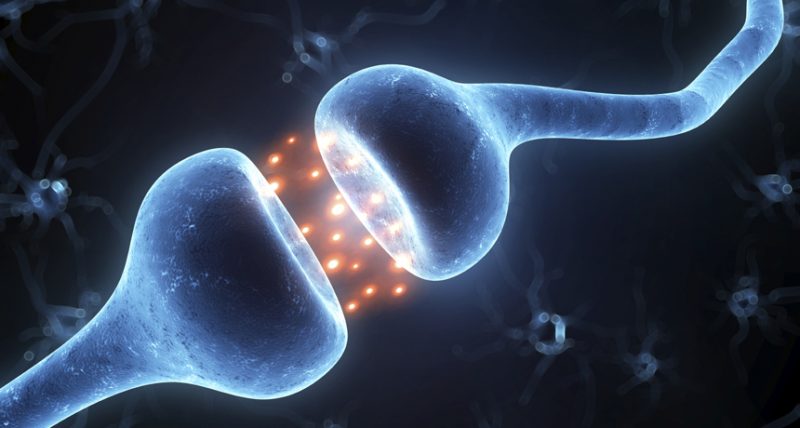
Many encephalon scientists use fMRI to map brain activeness. Others apply another type of brain scan, known every bit positron emission tomography, or PET. Experts have performed dozens of such studies. Each looked at how specific areas of the brain responded to specific tasks.
Nathan Spreng did something a niggling different: He decided to study the studies. Spreng is a neuroscientist at Cornell University in Ithaca, N.Y. A neuroscientist studies the brain and nervous system. Spreng wanted to know how the brain changes — how it morphs a little bit — as we learn.
He teamed upwards with two other researchers. Together, they analyzed 38 of those earlier studies. Each study had used an fMRI or PET scan to probe which regions of the brain turn on when people learn new tasks.
Areas that allow people to pay attention became well-nigh active as someone began a new task. But those attention areas became less active over time. Meanwhile, areas of the encephalon linked with heedless and heed-wandering became more active equally people became more familiar with a chore.
"At the beginning, you crave a lot of focused attention," Spreng says. Learning to swing a bat requires a great deal of focus when y'all first try to hit a ball. Merely the more you practice, Spreng says, the less y'all have to recollect well-nigh what you're doing.
Extensive practice tin fifty-fifty allow a person to perform a chore while thinking about other things — or about goose egg at all. A professional pianist, for case, can play a circuitous piece of music without thinking about which notes to play adjacent. In fact, stopping to think well-nigh the chore can really interfere with a flawless performance. This is what musicians, athletes and others often refer to as beingness "in the zone."
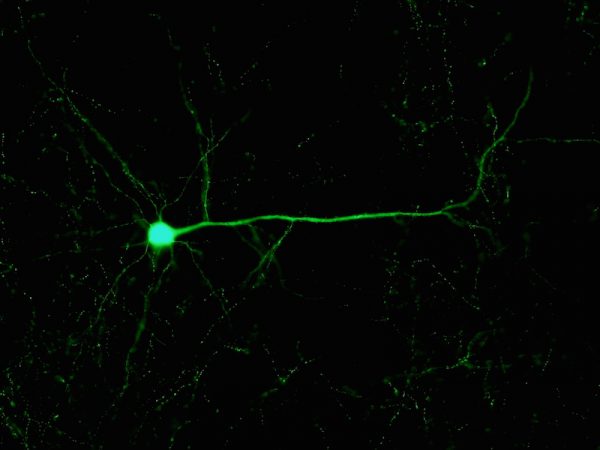
Cells that burn together, wire together
Spreng's findings involve the whole brain. Nonetheless, those changes really reflect what's happening at the level of private cells.
The encephalon is made up of billions of nervus cells, called neurons. These cells are communicative. They "talk" to each other, mostly using chemical messengers. Incoming signals crusade a listening neuron to fire or send signals of its own. A cell fires when an electrical signal travels through information technology. The signal moves away from what is called the cell torso, down through a long structure called an axon. When the signal reaches the end of the axon, it triggers the release of those chemical messengers. The chemicals then jump beyond a tiny gap. This triggers the adjacent cell to fire. And on it goes.
Every bit we acquire something new, cells that transport and receive information most the job get more than and more efficient. It takes less endeavor for them to signal the next prison cell virtually what'southward going on. In a sense, the neurons become wired together.
Spreng detected that wiring. Every bit cells in a brain area related to some task became more efficient, they used less energy to conversation. This allowed more than neurons in the "daydreaming" region of the brain to rev up their activity.
Neurons tin bespeak to several neighbors at once. For case, i neuron might transmit information near the location of a baseball pitch that's flying toward you. Meanwhile, other neurons alert your muscles to get fix to swing the bat. When those neurons fire at the same time, connections between them strengthen. That improves your ability to connect with the ball.
Learning while you lot slumber
The brain doesn't shut down overnight. In fact, catching some zzz's can dramatically amend learning. That'south because as nosotros sleep, our brains shop memories and new information from the previous day. And so a poor dark'due south sleep tin can hurt our ability to think new things. Until recently, however, researchers didn't know why.
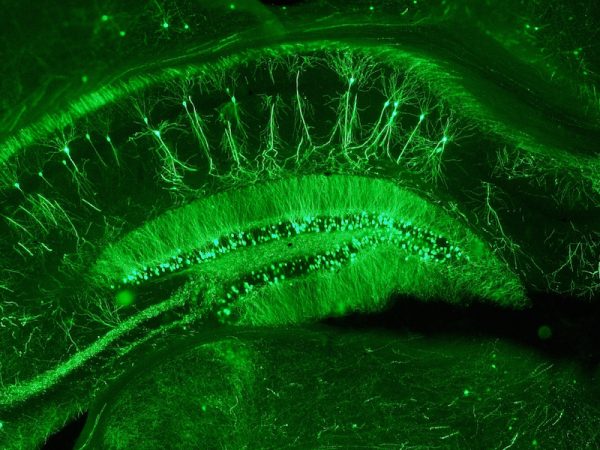
A group of scientists at the University of Heidelberg in Germany provided the start clues. Specific cells in the hippocampus — that region involved in storing memories — fired when mice slept, the scientists found. Just the cells didn't burn down normally. Instead, electrical signals spontaneously fired near the middle of an axon, and then traveled back in the direction of the prison cell body. In other words, the cells fired in reverse.
This boosted learning. It did so by making connections between cells stronger. Once again, the activeness sort of wired together the cells. Research by Olena Bukalo and Doug Fields showed how it happens. They are neuroscientists at the National Institutes of Child Wellness and Homo Development in Bethesda, Md.
Working with tissue from rat brains, the scientists electrically stimulated nerve axons. Carefully, they stimulated them but in the middle. The electrical signals so traveled in contrary. That is just what the German scientists had seen.
This reverse signaling made the neuron less sensitive to signals from its neighbors, the experts institute. This fabricated information technology harder for the cell to burn, which gave the neuron a adventure to recharge, Bukalo explains. When she then applied electric stimulation almost the cell trunk, the neuron fired. And information technology did and so even more than strongly than it had before.
Cells involved in learning new data are most likely to burn in reverse during sleep, Bukalo says. The next solar day, they will be wired more tightly to each other. Although scientists don't know for certain, information technology is likely that repeated cycles of reverse firing create a strong network of neurons. The neurons relay information faster and more than efficiently, but equally Spreng plant in his study. As a result, those networks reflect an improvement in understanding or physical skill.
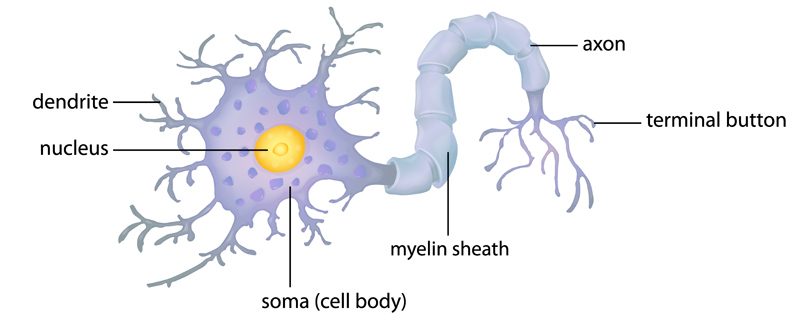
Firing faster
Neurons are the all-time-known cells in the brain. But they are far from the simply ones. Another type, called glia, really makes upward a whopping 85 percent of encephalon cells. For a long time, scientists idea that glia simply held neurons together. (Indeed, "glia" accept their proper noun from the Greek word for gum.) But recent enquiry past Fields, Bukalo's colleague at the National Institutes of Child Wellness and Man Evolution, reveals that glial cells also become agile during learning.
One type of glial prison cell wraps effectually nerve axons. (Notation: Not all axons have this wrapping.) These wrapping cells create what's known as a myelin sheath. Myelin is made of protein and fatty substances. It insulates the axons. Myelin is a scrap like the plastic coating that jackets the copper wires in your home. That insulation prevents electrical signals from inappropriately leaking out of one wire (or axon) and into some other.
In axons, the myelin sheath has a 2nd role: It really speeds the electrical signals forth. That'south because glial cells strength a point to jump from one spot on the axon to the next. Equally it hops between glial cells, the point moves faster. It'due south kind of similar flying from 1 spot to the next, instead of taking the train.
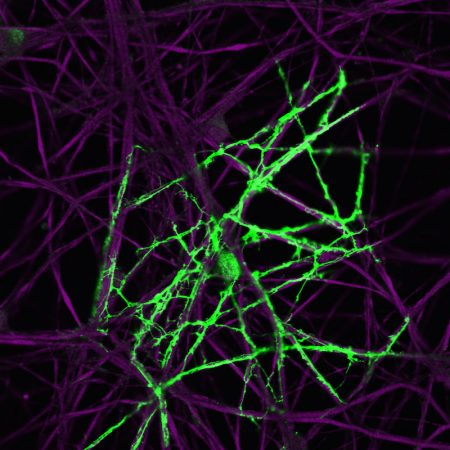
Fields has constitute that when new skills are learned, the amount of myelin insulating an axon increases. This happens equally the size of individual glial cells increases. New glial cells also may be added to blank axons. These changes improve the power of a neuron to signal. And that leads to better learning.
A thicker myelin sheath helps better all types of erudite tasks. These include reading, creating memories, playing a musical musical instrument and more. A thicker sheath is also linked with better decision-making.
Nerve cells proceed to add myelin well into adulthood, as our brains keep to grow and develop. The prefrontal cortex, for example — that expanse where decisions are fabricated — gains myelin well into a person's 20s. This may explicate why teens don't always make the all-time decisions. They're not finished sheathing their nerve cells. Only there is hope. And getting enough sleep certainly tin can help. Glial cells, similar neurons, seem to change nearly during certain stages of sleep.
Exactly what causes the glial cells to alter remains a mystery. Fields and his colleagues are hard at work to effigy that out. It's exciting, he says, to launch into a whole new field of enquiry.
Slow and steady
These changes in the brain allow for faster, stronger signaling between neurons every bit the brain gains new skills. But the best way to speed up those signals is to innovate new information to our noggins — slowly.
Many students instead endeavour to memorize lots of information the night before a test. Cramming may get them through the test. Simply the students won't recall the information for very long, says Hadley Bergstrom. He is a neuroscientist at the National Institutes of Alcohol Abuse and Alcoholism in Rockville, Md.
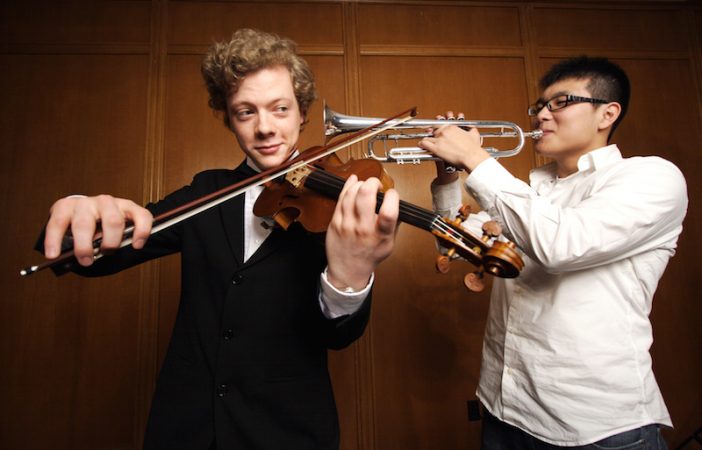
It'south important to spread out learning over many days, his work shows. That means learning a little bit at a fourth dimension. Doing then allows links between neurons to steadily strengthen. It also allows glial cells time to improve insulate axons.
Even an "aha!" moment — when something of a sudden becomes articulate — doesn't come up out of nowhere. Instead, it is the consequence of a steady accumulation of data. That's considering adding new data opens up memories associated with the task. Once those memory neurons are active, they can form new connections, explains Bergstrom. They besides can grade stronger connections within an existing network. Over time, your level of agreement increases until you of a sudden "go" information technology.
Like Fields and Bukalo, Bergstrom stresses the importance of sleep in forming the new memories needed to gain knowledge. And so the next time you study for a test, showtime learning new information a few days ahead of time. The night before, requite your brain a intermission and become to bed early on. It volition let your brain a take a chance to cement that new information into its cells. And that should boost your chances of doing well.
Word Find (click here to enlarge for printing)
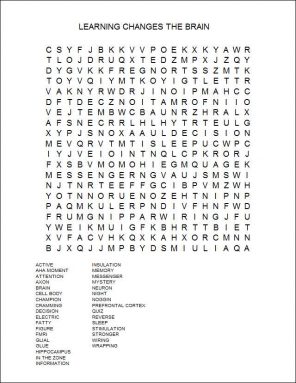
Source: https://www.sciencenewsforstudents.org/article/learning-rewires-brain

0 Response to "Nervous System Pathways That Get Recreated Over and Over Again"
Post a Comment